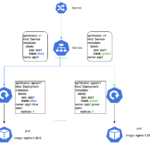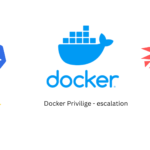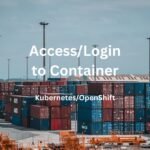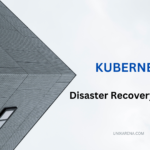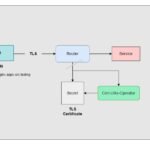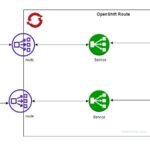Securing etcd in a Kubernetes cluster is crucial as etcd is a distributed key-value store that holds the cluster’s configuration data, including sensitive information. It acts as a reliable and highly available database that stores information about the cluster’s configuration, its current state, and metadata. What “etcd” does in kubernetes ? 1. Configuration Data Store: […]
kubernetes
Kubernetes: How Blue-Green Deployment works?
Blue-green deployment involves simultaneously operating two application environments within a production cluster. In this deployment approach, the stable version of the application is deployed in the first environment (blue), while the new version is deployed in the second environment (green). By default, Kubernetes performs a rolling update of a deployment. As part of the rollout […]
How to get root access on the docker host filesystem?
How to gain root access to the host filesystem in a Docker environment when you don’t have root or “sudo” privileges on the host? Since many Kubernetes systems still run on Docker and a transition to Podman is ongoing, this article provides a solution to allow access to the host filesystem with root privileges from […]
Kubernetes – How to cleanup the failed pods from all namespaces ?
In the Kubernetes environment, we could often see that pods might fail due to various reasons. Most of the time, it could be related to config issues or capacity-related issues. In such conditions, you could see the pod status could be “pending”, “Crashloopbackoff”, “evicted”, “Failed”, “ContainerCannotRun”, “Error”, “ContainerCreating” etc. As a DevOps engineer, you need […]
How to login to Docker Container/Pods ? Kubernetes/OpenShift
Container is a lightweight, standalone, and executable package of software that includes everything needed to run a piece of software, including the code, a runtime, system tools, libraries, and settings. containers are built from images, which are essentially snapshots of a container at a specific point in time. Docker is most widely used container solution […]
Kubernetes (k8s)- Disaster Recovery Strategies
A disaster recovery (DR) strategy is a plan for maintaining and recovering critical systems and data in the event of a disaster or other interruption. Kubernetes (also known as K8s) is a popular open-source container orchestration system that allows users to automate containerized applications’ deployment, scaling, and management. A disaster recovery (DR) test is important […]
Openshift secure route TLS – Is it possible to use secrets?
The OpenShift Container Platform provides multiple options to provide access to external clients. The route is one of the methods to provide the access to external clients. We can enable TLS termination on route to encrpt the data sent over to the external clients. We need to update the valid certificate and private key in […]
How to expose service on the Openshift? Enable TLS secure route?
Openshift provides multiple options to expose the application to external traffic. When you deploy a pod in openshift, kubernetes allocates the internal IP address for each pod. If you are deploying an nginx container to serve the webpage, the nginx pod will have a unique internal IP address but it can’t be accessed outside the […]
kubernetes – Traefik Middlewares – Part 5
Middleware helps to tweak the requests before reaching the actual service in kubernetes. Traefik support multiple middleware and one can use them depending on their needs. Some of the middleware helps with basic authentication, and some of the middleware helps with redirection. Middleware also helps to modify the request headers for incoming requests. The following […]
kubernetes traefik – Managing TLS Certificates – Part 4
How to configure HTTPS for your applications on the Kubernetes cluster? How to manage TLS certificates using traefik? Traefik proxy is a very popular ingress controller in kubernetes environments. It supports both HTTPS (router) and TLS connections. This article explains how to configure TLS connection and obtain TLS certificates dynamically using pebble (Only for the […]

